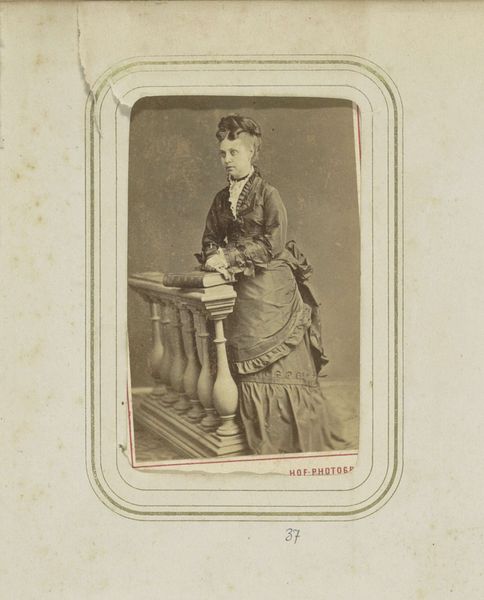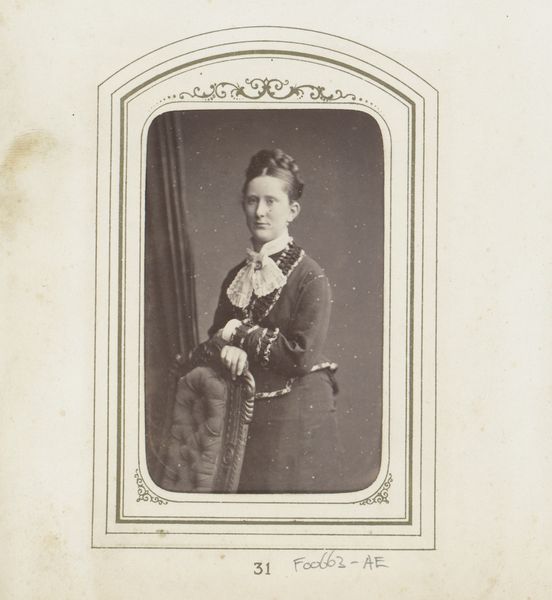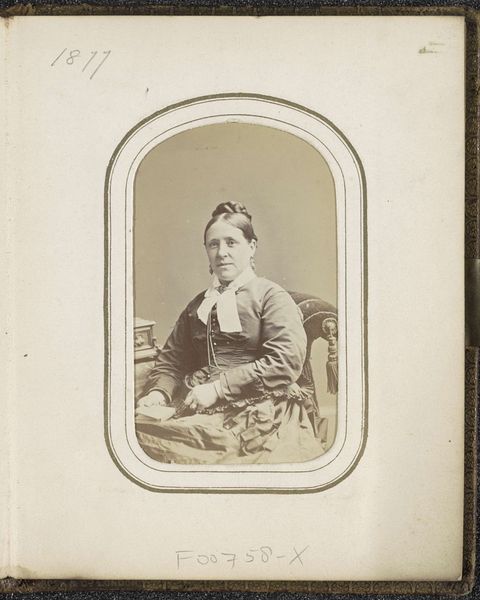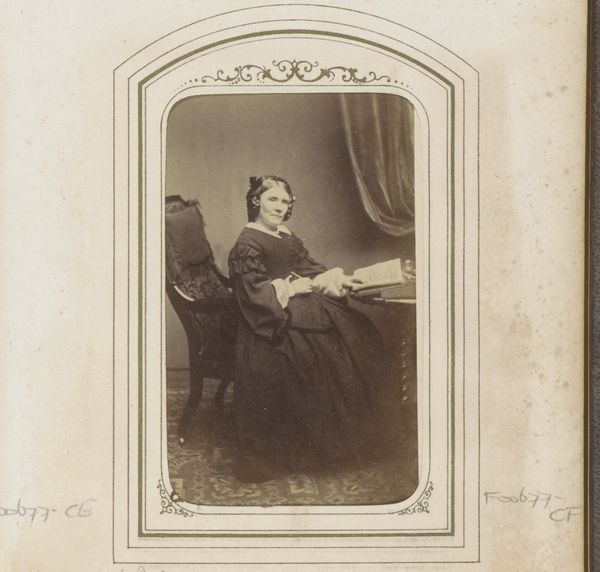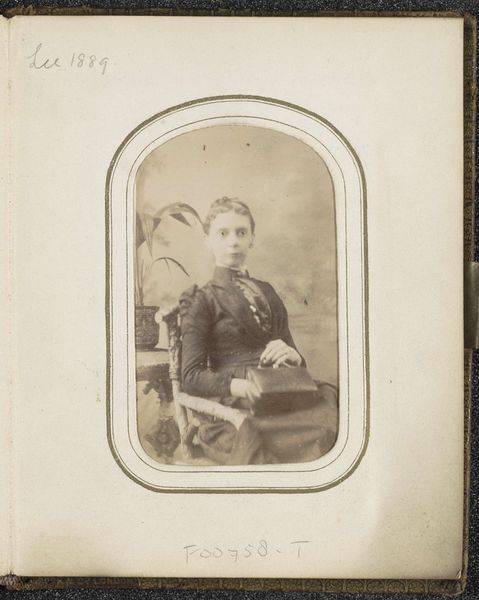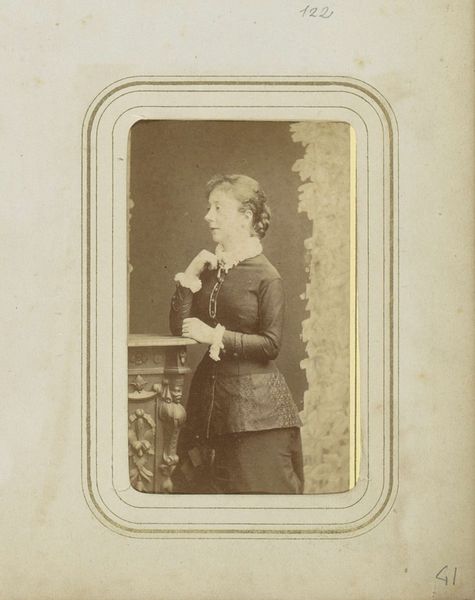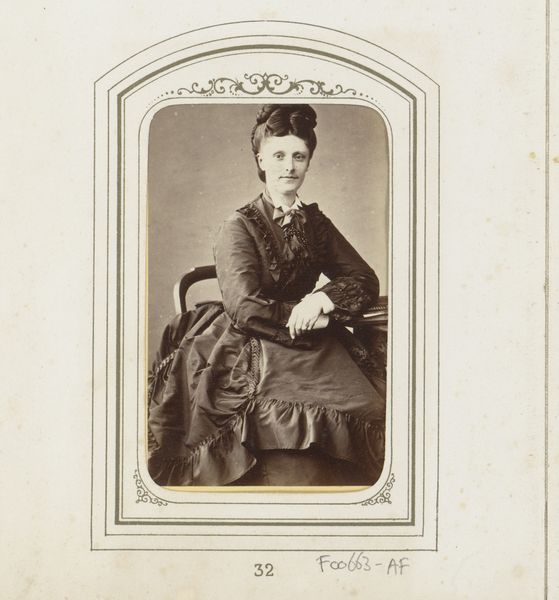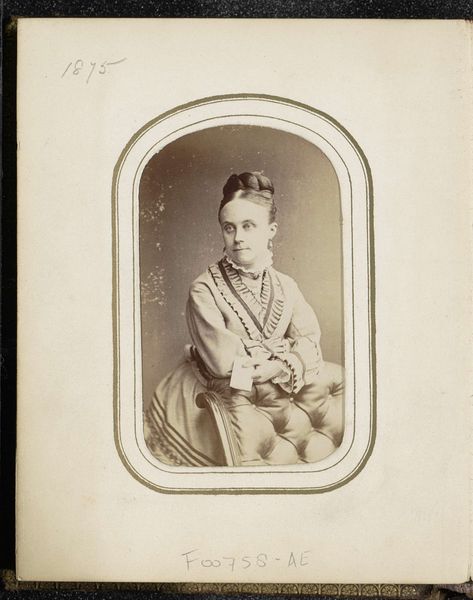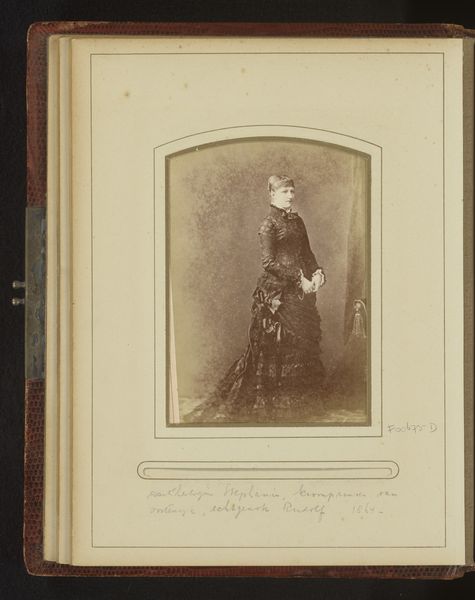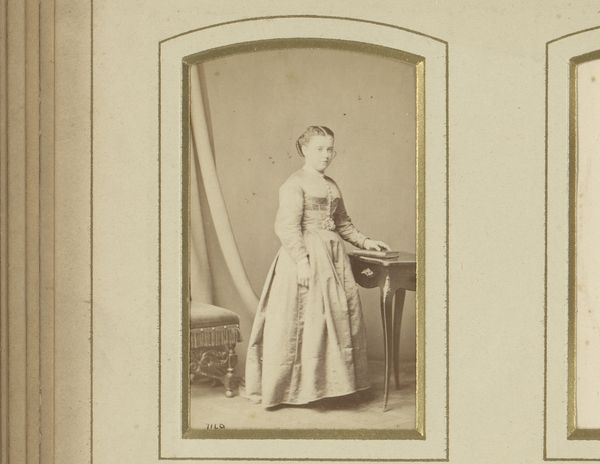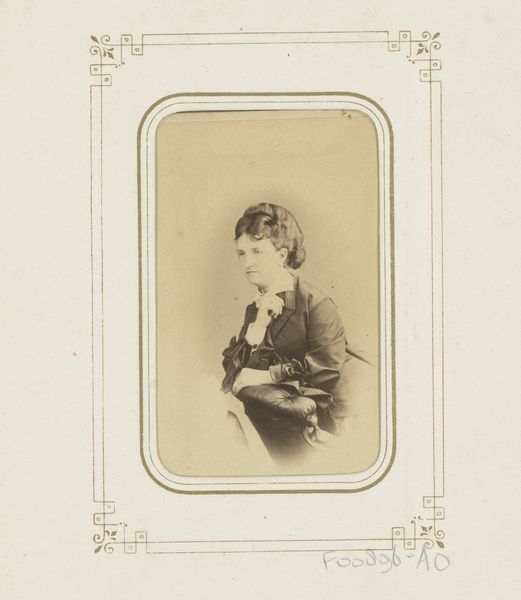
photography
#
portrait
#
photography
#
historical photography
#
19th century
Dimensions: height 63 mm, width 98 mm
Copyright: Rijks Museum: Open Domain
This is a photograph of Eva Prins by J. Jungmann, likely made in the late 19th century, using the wet collodion process. Photography in this period was a fascinating blend of science and craft. The wet collodion process, in particular, required great skill and speed. A glass plate was coated with a light-sensitive emulsion, exposed in the camera while still wet, and then developed immediately. This meant photographers had to carry a portable darkroom with them, a testament to their dedication. The resulting image has a distinctive look, with a soft, dreamy quality and incredible detail. The tones range from warm sepia to cool gray, all achieved through chemical reactions and precise timing. It’s important to remember that each photograph was a unique, handmade object, a far cry from today's digital snapshots. Photography democratized portraiture, making it accessible to a wider range of people, not just the wealthy elite. Yet, the process was still labor-intensive, reminding us of the hand skills involved in even the most seemingly modern technologies. The photograph represents the intersection of art, science, and society during the Victorian era, and an important shift in the way we document our world and ourselves.
Comments
No comments
Be the first to comment and join the conversation on the ultimate creative platform.
